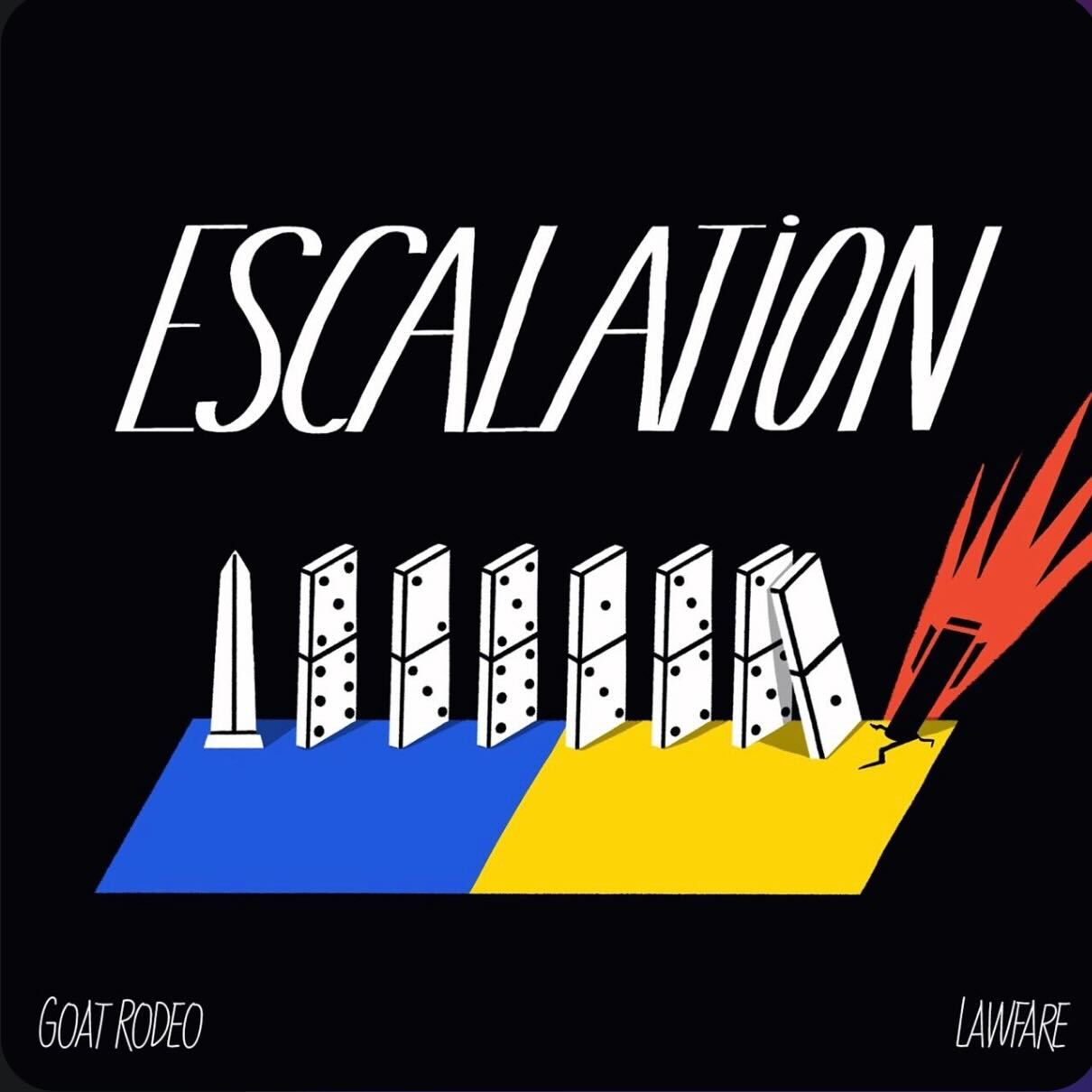Russia’s Weaponization of Ukrainian Prisoner Exchanges
Russia is delaying the exchange of prisoners of war and using it as a tool to destabilize Ukraine.
.jpg?sfvrsn=f5d2b52b_5)
Published by The Lawfare Institute
in Cooperation With

On July 17, Russia released 95 Ukrainian prisoners of war in exchange for 95 Russian soldiers. Since the beginning of the full-scale war in 2022, Ukraine has managed to conduct 54 prisoner exchanges, freeing 3,405 Ukrainians held captive.
Unsurprisingly, the prisoner exchanges are of particularly high salience for Ukrainians because the lives and safety of Ukrainian soldiers affects a large percentage of Ukrainian families and the overall state of Ukrainian society. In addition to Ukrainian soldiers, a staggering number of Ukrainian children—more than 19,500—have been deported and illegally transferred to Russia and other countries such as Belarus. What’s more, according to the Ukrainian Parliament commissioner for human rights, approximately 378 deported Ukrainian children have already been transferred to Russian families for adoption. This is a crime.
Ukrainians held in Russian captivity are constantly subjected to pressure, abuse, and torture. Released prisoners have returned to Ukraine emaciated with evident signs of gross mistreatment, including sexual violence. Some Ukrainian soldiers lost 65-110 pounds in captivity, some returned with chronic diseases, others with bruises and fractures.
Prisoners are thus one of Kyiv’s major priorities. In particular, Ukraine has raised the issue of prisoners on international platforms such as the Global Peace Summit, has sought the help of third countries (the last exchange took place with the assistance of the United Arab Emirates), created a coordination center that deals with prisoners, launched the project “I want to live,” which encourages Russians to surrender to the Ukrainian Armed Forces and thus replenishes the exchange fund, and more.
But Russia is deliberately slowing down the exchange and using the situation to spread disinformation and put psychological pressure on the Ukrainians. Russia’s strategy is to keep the families of captured Ukrainian soldiers and civilians in a state of constant terror and uncertainty in order to turn Ukrainians against their government and military leadership. For example, Ukraine has long offered an “all for all” exchange (the exchange of all captured Ukrainians for all captured Russians), but Russia is not interested. Instead, Russia is stalling: Until the summer of 2023, exchanges took place almost every month, but after July 2023, it took nearly six months for the next exchange to occur. After another exchange in February 2024, there was yet another pause until May 31. As explained by head of Ukrainian defense intelligence Kyrylo Budanov, “Russia is using all possible factors to create social tension. And it will continue to do so.” Moscow, in turn, blames Kyiv for these pauses.
Russia is also spreading fake images and videos on social media as well as written propaganda statements, with narratives that the Ukrainian government allegedly does not want to exchange any prisoners of war. For example, Russia publishes, and threatens to publish, large lists of real prisoners of war, with horrific statements such as “Ukraine does not need these soldiers” and—in an effort to wreak psychological havoc—that this information will be interesting “for women, mothers and Ukrainian citizens in general.” The families of these prisoners of war are making their voices heard, however, by regularly organizing demonstrations demanding the return of their loved ones.
As described above, the number of families impacted by this horrific situation is daunting. Almost 37,000 people in Ukraine are considered to be missing. At the beginning of 2024, more than 8,000 Ukrainians were held in Russian captivity—notably, this figure includes more than 1,600 civilians but omits the stolen children. The numbers reported are almost certainly lower than the actual count of Ukrainians held in Russian captivity, as Russia, in violation of international humanitarian law, does not provide a complete list of those held. Thus, only half of the 8,000 Ukrainians held in captivity have been confirmed by Russia through the International Committee of the Red Cross (ICRC).
In addition, Moscow, unlike Ukraine, refuses to allow international human rights organizations access to Ukrainian prisoners of war and does not allow them to make phone calls. The ICRC, for example, has the authority to request access to prisoner of war detention centers to conduct visits to monitor the treatment of prisoners. Released Ukrainian soldiers, however, report they did not see ICRC representatives while detained in Russia. ICRC representatives also claim they were refused access to detained prisoners in Russia. On June 25, representatives of the Russian Office of the Ombudsman attended an exchange of prisoners for the first time to record possible human rights violations.
Unlike Russia, Ukraine has allowed international human rights organizations to access Russian prisoners of war. For example, in March—after much openness and communication between the Ombudsman Institution of the Republic of Türkiye and Ukrainian representatives at the Geneva Convention—a Turkish delegation visited a camp for Russian prisoners of war in the Lviv region. A similar visit to Russia has yet to take place.
Despite its efforts to slow the prisoner exchange process as well as its refusal to cooperate with international human rights organizations, Russia insists that Ukraine is to blame for the slow progress and continued suffering of Ukrainian prisoners of war. On May 29, for example, Russian Human Rights Commissioner Tatyana Moskalkova alleged that “prisoner exchanges with Ukraine have been suspended due to the far-fetched demands of the Ukrainian side.” She did not specify what kind of “demands” she was referring to.
Ukrainian Commissioner for Human Rights Dmytro Lubinets rebuffed Moskalkova’s claims about Ukraine’s demands, reminding Ukrainians that “Ukraine did not stop anything! Exchanges are not taking place, because Russia does not want it!” He also explained that Kyiv had created a medical commission to keep track of and exchange seriously wounded, sick, and female prisoners first in accordance with the Geneva Convention. Russia has yet to do the same. What’s more, Russia recently—without explanation—removed 99 percent of people from the exchange lists submitted by the Ukrainian side and refuses to release its own updated lists.
There is another reason behind Russia’s efforts to slow the repatriation process: Its treatment of Ukrainian prisoners constitutes an ongoing set of war crimes, and released prisoners are evidence of it. According to the Office of the Prosecutor General of Ukraine and as described above, approximately 90 percent of Ukrainian prisoners of war are subjected to physical and mental torture, including sexual torture.
In a March report, experts from the UN Human Rights Monitoring Mission in Ukraine stated that 39 out of 60 released prisoners of war (all of which were men) were subjected to sexual violence, “including attempted rape [and] threats of rape and castration.” What’s more, 58 out of 60 former prisoners reported that they were tortured by Russian military and prison guards, including “beatings, electric shocks, forcing them to stay in an uncomfortable position for long periods of time, threats of execution or imitation of execution.” All of this contradicts the norms of international law, in particular the Geneva Convention, which prohibits maltreatment, torture, outrage and humiliation, and any form of killing of prisoners of war.
Unfortunately, many of these Ukrainian prisoners of war don’t make it out of captivity alive. From December 2023 to February 2024, experts documented reliable reports of the execution of at least 32 Ukrainian prisoners of war. Since the beginning of the full-scale war, the Russians have executed at least 61 Ukrainian prisoners of war. Some brutal executions were deliberately recorded by Russian soldiers and then posted on social media. Also, at the end of July 2022, Russia staged an explosion in the barracks of the colony in Olenivka, Donetsk region. At that time, Ukrainian prisoners of war were held there, and at least 50 of them were killed. According to the Defense Intelligence of Ukraine, the attack was organized at the instruction of the then-leader of the Wagner Group, Yevgeny Prigozhin.
Although the prisoners are a derivative of the war unleashed by Russian President Vladimir Putin, Kyiv continues to insist on the formula of “all for all” exchange and hopes that, together with the international community, it will be possible to address this difficult situation and bring its people home.





